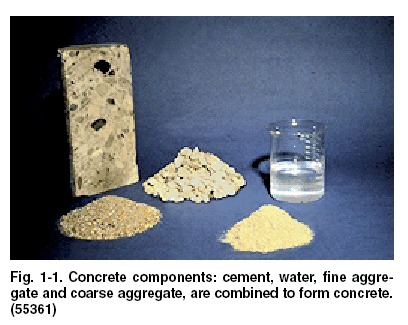
EXHIBIT A. What would Keats say?*
Photo: Courtesy of the Cement Association of Canada (Is it better in French?
)
* ("A beaker full of the
frozen north," maybe? I think not.)
You might read the poems. . .
.
Argument-poem
#1 The Concrete
Rose (more
for grownups).
Argument-poem
#2 Between The
Cracks (more for
kids).
. . . and/or the
essay:
A case of poetic
injustice?
The name "concrete poetry,"
according to most sources, was created in the 1950's. But
that's the era that brought us the Edsel, and
boomerang-shaped coffee tables, and living room
furniture covered in giant plastic bags, which tried to force
us to practice safe living. Perhaps this is a decade
whose judgment in aesthetic matters is, shall we say, open
to question?
An unhelpful paradox:
"concrete" is abstract
Another point: Kids can easily
enjoy and create graphic poetry. It's clearly a fine way
to demonstrate that poetry (and words, more broadly) can be fun
and interesting. It's also a way to demonstrate thinking outside
the box--or outside the lines (which will occur to you, if
your book happens to be entitled Outside the Lines: Poetry At
Play). But the term "concrete" seems
particularly ineffective in relation to kids. To
understand its use in the context of poetry really requires a
comprehension of "abstract vs. concrete;" that's an
opposition which is itself abstract, unfamiliar to
most kids, and not easily understandable, either. (Indeed, it's hard
to explain in this setting, since "concrete" as part of that
opposition in general implies tangible and/or specific--and the
"concrete" in "concrete poetry" is in itself a rather eccentric
extension of the word: the image created by a concrete poem is
only figuratively or relatively "concrete," since
it's made of words.)
Yet it's sometimes used to name
a literary concept which is simple, easy to understand
and enjoy: Poems that take a specific
shape, suggesting their subject matter. Why take this
concept--indeed, one that is extremely concrete, ironically
(at least, until you call it that!) and give it a name that is
almost guaranteed to cause
confusion? Moreover, letting kids use a name that they
probably can't quite grasp tends to make words seem
slightly opaque; sometimes that's necessary (and kids can "grow
into" a concept), but when there are clearer and
simpler alternatives available, to use a more complex term is
to impose confusion arbitrarily. In elementary school, you
shouldn't have to call a spade an implement. (As kids get older
and more sophisticated, they can use both terms, if there's a
need to keep "concrete" available.)
There are certainly other names
available. Here are some choices, and some thoughts about
them:
Picture
poetry (best for younger kids,
perhaps)
This is quite simple and clear.
For the youngest kids who can understand such poetry at all,
it might be the best term. However, it might seem too
simple or childish to keep using with older
kids.
(The debate continues. . . .click here for Part
II.)
| 





